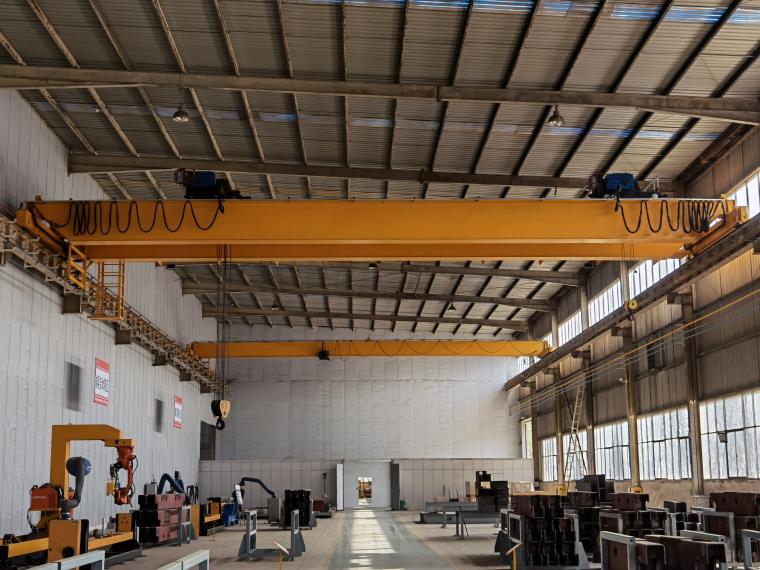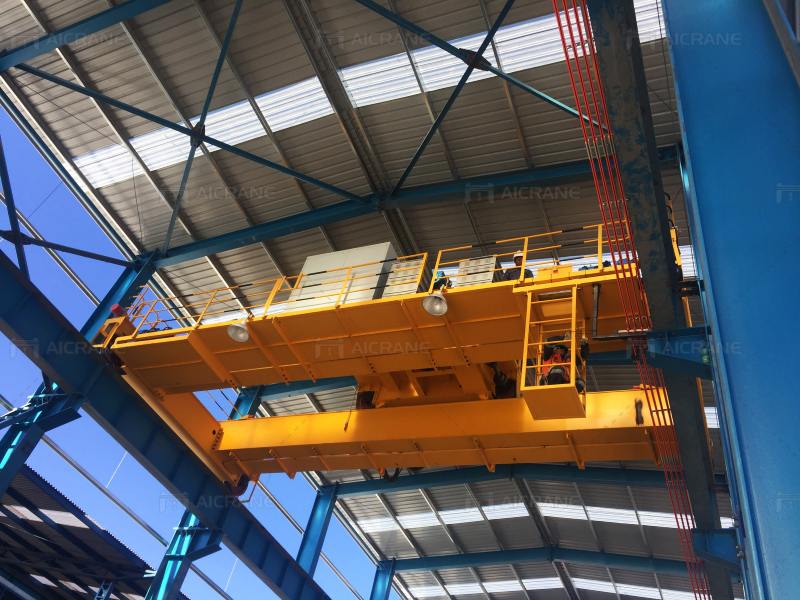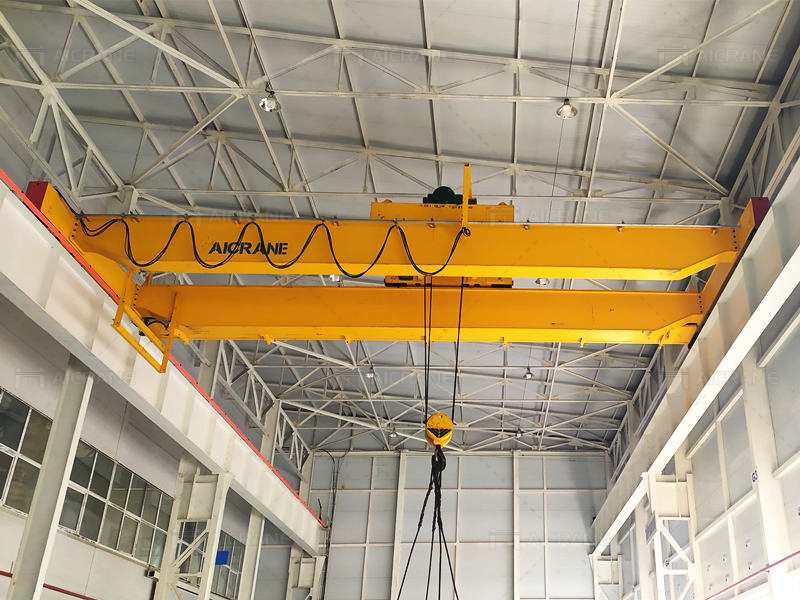The overhead crane market is undergoing significant changes as industries continue to prioritize efficiency, safety, and automation. With advancements in technology and growing demand for more specialized lifting solutions, the future of overhead cranes for sale looks promising. By 2025, overhead cranes are expected to be smarter, more energy-efficient, and capable of handling increasingly complex tasks. In this article, we’ll explore some of the key trends shaping the future of overhead cranes, focusing on models like the 50 ton overhead crane, 20 ton overhead crane, and top running overhead crane, all of which are evolving to meet the demands of modern industry.

1. Automation and Smart Technology Integration
Automation is one of the most significant trends impacting overhead cranes for sale. The demand for cranes with advanced control systems and automated features is rising, as companies seek to improve efficiency and reduce the potential for human error.
Incorporating technologies such as Internet of Things (IoT) and artificial intelligence (AI) into overhead cranes enables real-time monitoring, predictive maintenance, and improved operational control. For instance, smart cranes equipped with sensors can send alerts about wear and tear, helping prevent unexpected breakdowns and optimizing performance. By 2025, cranes are likely to be equipped with enhanced automation systems, allowing operators to control them remotely and monitor various aspects such as load weight, speed, and even weather conditions that might affect operations.
For larger capacities like the 50 ton overhead crane, automation can lead to more precise control, reducing the need for manual intervention. Similarly, cranes like the 20 ton overhead crane, while more compact, will benefit from automated systems for improved load management and operational efficiency.
2. Energy Efficiency and Sustainability
With increasing focus on sustainability, overhead crane manufacturers are investing in designs that offer better energy efficiency. Electric overhead cranes, particularly those that utilize regenerative braking systems and energy-efficient motors, are becoming more common. These systems capture and store energy generated during braking, reducing power consumption and improving operational costs over time.
Energy-efficient cranes are not only a response to environmental concerns but also an economic necessity. A top running overhead crane, for example, can be designed to optimize power usage, providing high lifting capacities while minimizing energy loss. As industries push for greener solutions, cranes will increasingly feature eco-friendly designs that meet stricter environmental regulations.
In addition, lighter materials and advanced manufacturing techniques are being utilized to reduce the overall weight of cranes, contributing to lower energy consumption during operation.

3. Improved Safety Features
Safety has always been a primary concern in crane operations, and the future of overhead cranes for sale will see more advanced safety features integrated into their design. With new regulations and the need for higher levels of safety in high-risk industries such as construction, manufacturing, and logistics, manufacturers are incorporating cutting-edge safety systems.
One of the key safety trends is the use of collision avoidance systems and load monitoring technology. Sensors and cameras will provide operators with real-time data on the crane’s surroundings, alerting them to potential hazards such as obstacles or people in the crane’s path. These systems will also enable the crane to operate at maximum efficiency without overloading, preventing accidents.
For heavy-duty cranes like the 50 ton overhead crane, safety systems are critical to handling such large loads. Automated load control and overload detection features will help prevent dangerous lifting conditions. Even for smaller models like the 20 ton overhead crane, advancements in safety technology will continue to play a major role in minimizing risks and improving workplace safety.
4. Customization and Flexibility
The demand for customizable overhead cranes is expected to increase in 2025 as businesses seek solutions that are tailored to their specific needs. Manufacturers are now offering a range of customization options to accommodate various industries and applications. Whether it’s modifying the crane’s lifting capacity, speed, or overall design, flexibility is key in the modern overhead crane market.
For instance, top running overhead cranes are ideal for facilities with high ceilings and large spans, as they allow for maximum headroom and greater lifting capacities. Custom configurations in terms of hoist types, crane girder designs, and control systems are becoming increasingly common.
Moreover, the ability to choose between different load capacities such as 20 ton overhead crane or 50 ton overhead crane allows businesses to invest in cranes that are specifically designed to meet the demands of their operations, from light-duty tasks to heavy lifting in industrial environments.

5. Advanced Materials and Design
As the overhead crane industry moves toward greater innovation, manufacturers are exploring new materials and design techniques to improve crane performance. The use of lightweight but durable materials, such as high-strength steel alloys and carbon fiber, is helping create cranes that are both powerful and more energy-efficient. This trend is especially beneficial for larger cranes like the 50 ton overhead crane, which require strength and durability to lift heavy loads over long distances.
Additionally, modular crane designs are becoming more popular. These designs allow for easier installation, maintenance, and future upgrades. Modular cranes are not only cost-effective but also provide businesses with the flexibility to upgrade their equipment as technology advances.
For smaller cranes, such as the 20 ton overhead crane, manufacturers are focusing on optimizing design to maximize space efficiency while maintaining high performance. The combination of advanced materials and smart design will allow these cranes to become more compact without sacrificing strength or capacity.
6. Globalization of the Overhead Crane Market
As global trade and industry expand, overhead cranes are in high demand across different sectors, including manufacturing, mining, logistics, and port operations. Manufacturers are now looking beyond regional markets to cater to a worldwide audience, offering cranes that meet international standards.
This globalization has led to increased competition in the market, with manufacturers striving to offer high-quality cranes at competitive prices. As a result, businesses will have access to a wider range of overhead cranes for sale, from 20 ton overhead cranes suitable for smaller facilities to 50 ton overhead cranes capable of handling large-scale industrial applications.
Conclusion
The future of overhead cranes for sale is marked by technological advancements that focus on energy efficiency, automation, safety, and flexibility. With developments in smart technology, sustainability, and customizable designs, cranes will become even more versatile, cost-effective, and suited to the specific needs of industries. Whether you’re looking for a 20 ton overhead crane for lighter lifting tasks or a 50 ton overhead crane for heavy-duty operations, manufacturers are continually innovating to provide better solutions. By 2025, we can expect the market to offer even more sophisticated and efficient models, driving improved productivity and safety across construction sites, warehouses, and manufacturing facilities worldwide.